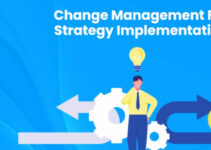Situational crisis communication theory by Timothy Coombs developed and proposed the theory and model in 2007. It outlines that crisis managers should streamline their strategic crisis response relevant to the crisis responsibility and the reputational threats impacting the company. Today, we’ll discuss Timothy Coombs situational crisis communication theory; various types, causes, and crisis responses.
The situational crisis communication theory recognizes response strategies that would help them to manage the crisis. It follows the idea of finding out the cause of the crisis and disruption and its impact on the company’s reputation.
Causes of Situational Crisis Communication Theory
- Increase or decrease in demand
- Defective products
- Supply chain issues
- Weather events
- Poor customer relation management of employees
Crisis Responses Strategies in Situational Communication
Let’s discuss the four main crisis response communication strategies to deal with the responses of stakeholders; they’re as follows;
Rebuilding Strategy
As the name implies, it focuses on rebuilding the company’s brand reputation and its relationship with the customers and the stakeholders. Companies could do so by taking responsibility for their mistakes, compensating the affected individuals, and apologizing to the public.
During an accidental crisis, companies often employ a rebuilding strategy. If the company has a history of facing various crises in the past, they should implement to rebuilding strategy to win the trust and repair the damaged relationship of customers.
Diminish Strategy
Diminishing strategy allows you to decrease the amount of responsibility placed on the company. It focuses on defending and justifying the company’s action in a particular situation. However, it is a highly useful strategy when the company is not responsible for the crisis. If the company is implementing the diminishing strategy accidentally, make sure that the company doesn’t have a record of crisis and making mistakes.
Deny Strategy
The deny strategy focuses on shifting the blame away from the company. It requires the company to confront the accuser for the wrong accusations and blame the other party for the disruption. Companies should implement the deny strategy when they are facing false rumors and wrong claims that are jeopardizing the company’s reputation.
Bolster Strategy
The bolster strategy focuses on highlighting the good deeds and positive actions of the company and admiring stakeholders for their loyalty. Companies implement the bolster strategic approach in combination with other crisis strategies; when they are dealing with victim crisis situations.
Types of Timothy Coombs Situational Crisis Communication Theory
Let’s discuss some of the main types of Timothy Coombs situational crisis communication theory as follows;
Victim Crisis
A victim crisis is when the company is falsely accused of something that they haven’t done. For instance, Tylenol was falsely accused of killing 7 people in Chicago in 1982; an investigation showed that the killer mixed cyanide in the Tylenol syrup.
Natural disasters are another great example of a victim crisis; they may jeopardize the physical infrastructure of the company. They won’t be able to perform their operations after the crisis.
Accidental Crisis
An accidental crisis happens when the company has made a mistake, but it was unintentional. It occurs when the company is facing the charges of product and equipment failure. For instance, Samsung Galaxy Note 7 launched a massive product recall for defective batteries, catching fire and exploding. The accidental crisis could badly jeopardize the brand reputation of the company.
Preventable Crisis
A preventable crisis happens when the company takes the risk for something and it yields negative outcomes and results. During the earthquake in Haiti in 2010, the American Red Cross raised 500 million USD and the company promised to use the funds to help people get back on their feet. Instead of improving the infrastructure of the country, the company only built 6 houses.
Financial Crisis
Financial crisis is a highly stressful event for the company and it would jeopardize the company’s brand reputation and the jobs of many people. This type of crisis situation happens when the company requires funds due to a sudden unexpected economic recession. Some of the other unexpected events would be loss of business assets, market downturn, and natural disasters.
Personnel Crisis
Personal crises could happen due to various factors and issues like immoral, unethical, and illegal activities, employee misconduct, and others. It happens when the problem and mistake are relevant to the working life of a person. Usually, the senior management of the company engages in unethical activities.
Natural Crisis
As the name implies, the natural crisis happens due to a variety of natural disastrous events like; landslides, tornados, hurricanes, earthquakes, fires, floods, and others. They could occur at any time and it would jeopardize the physical infrastructure of the company.
Technological Crisis
A technological crisis happens when the company requires immediate help due to any sudden tech failure or issue. Some of the main causes of tech problems are unexpected events, data breaches, power outages, data glitches, and hardware malfunction.
Conclusion: Timothy Coombs Crisis Communication |Situational Crisis Communication Theory | Timothy Coombs Situational Crisis Communication
After an in-depth study of Timothy Coombs situational crisis communication theory; we have realized that situational theory offers a unique perspective. If you are learning about Situational crisis communication theory; then you should keep in mind the abovementioned types, response strategies, and various causes.
Ahsan is an accomplished researcher and has a deep insight in worldly life affairs. He goes Live 3 days a week on various social media platforms. Other than research writing, he’s a very interesting person.


